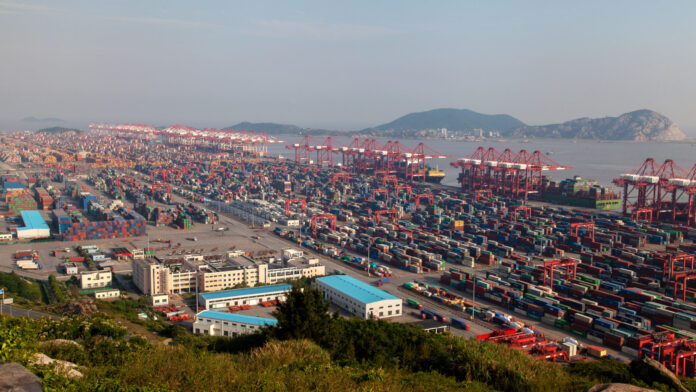For nearly two decades, China’s rise was a defining feature of global economic growth. Its demand powered commodity markets, its capital funded mega infrastructure projects, and its factories fueled Asia’s export boom. But the tides are shifting. China is now grappling with slower growth, a weakening property sector, aging demographics, and a recalibration of its foreign investments. The consequences of this slowdown are already being felt across Asia, and Sri Lanka is not immune.
China’s GDP growth is expected to fall below 5 percent in the coming years, a sharp decline from its previous double-digit highs. Structural issues, such as declining birth rates, excessive local government debt, and weaker household consumption, are weighing on long-term prospects. Export demand has also weakened as global supply chains diversify. These changes are not just affecting Chinese cities—they are redrawing Asia’s trade dynamics.
For Sri Lanka, which has long benefited from China’s outbound investment and trade appetite, this presents a critical moment. Colombo Port, Hambantota Port, and several key highways and energy projects were funded or built under Chinese-backed initiatives. With a slowdown in China’s outbound financing, Sri Lanka may see fewer mega deals and slower follow-up investments under the Belt and Road Initiative. The Hambantota model itself, built on high expectations of transshipment activity, will need to be reassessed in light of changing regional traffic patterns.
At the same time, other Asian economies are adapting fast. India, Vietnam, Indonesia, and Bangladesh are absorbing some of the manufacturing shifts as global firms seek alternatives to China. This trade reorientation is prompting new shipping and logistics corridors that bypass traditional routes. Initiatives like India’s PM Gati Shakti plan, the India–Middle East–Europe Economic Corridor, and renewed interest in Southeast Asia’s ports are rebalancing maritime flows. Sri Lanka, situated at the heart of the Indian Ocean, must now
compete harder to remain relevant.
The challenge is not just to attract Chinese capital but to diversify trade and logistics partnerships. Japan, South Korea, and India are all increasing their engagement across the region. Western investors, too, are looking at emerging Asia with renewed interest. Sri Lanka has an opportunity to position itself as a neutral logistics and service hub but that will require reforms in port governance, trade facilitation, and foreign investment frameworks.
Additionally, Sri Lanka’s export base must evolve beyond traditional products like tea and garments. As China’s consumption patterns change, demand for high-value food products, tourism, and digital services will continue to grow—albeit more selectively. The window for Sri Lankan exporters to tap into China’s middle class is narrowing but not closed. However, they must now compete with better-prepared players from Southeast Asia and Latin America.
What is clear is that Asia is entering a post-China growth phase—not defined by Beijing’s decline, but by a more multipolar economic order. The future will not be about one dominant buyer or builder, but about agility, alliances, and adaptation. For Sri Lanka, this is not a crisis but a recalibration. But the time to adjust trade strategy, logistics policy, and investment outreach is now. Waiting for China to bounce back to its old self may not be a winning bet.




